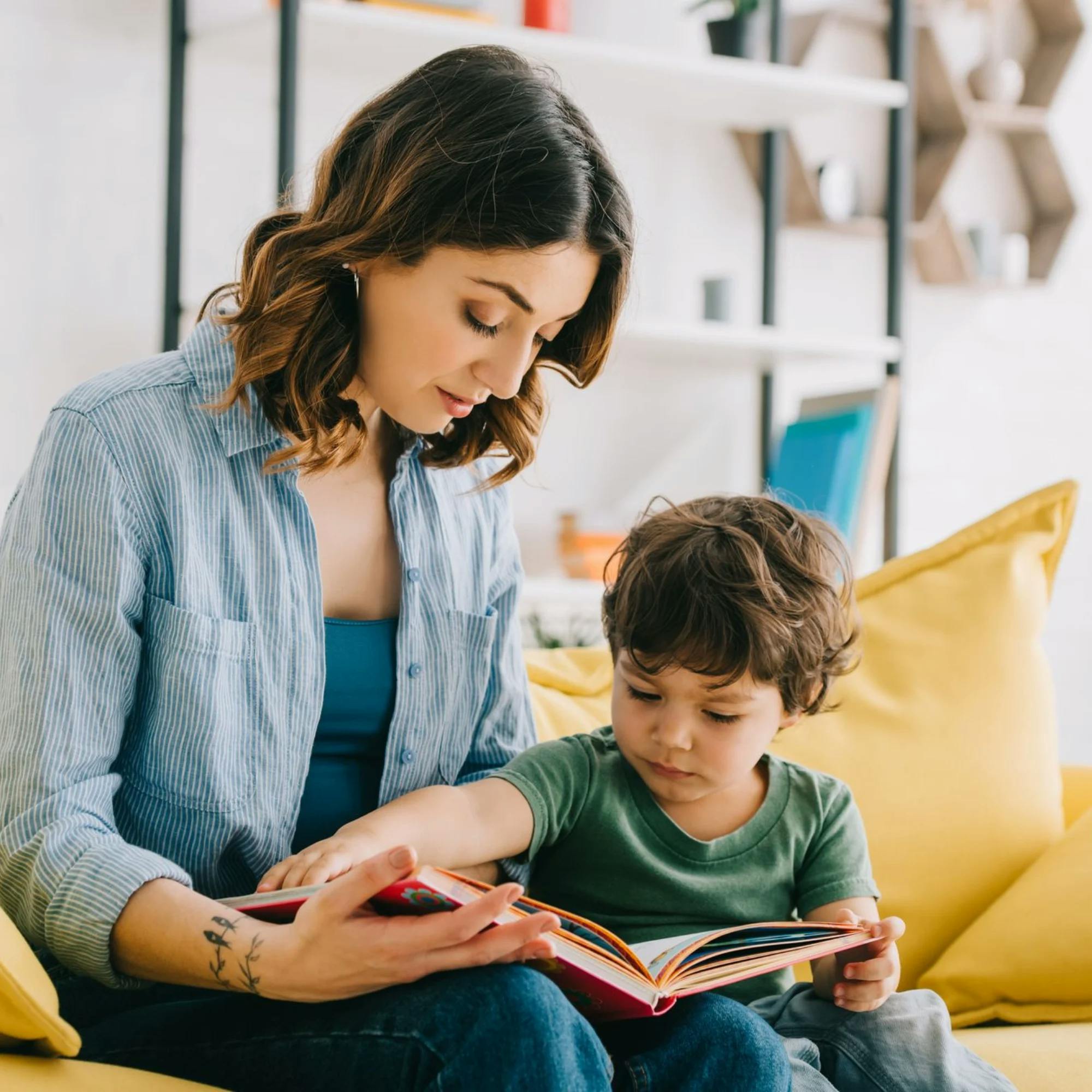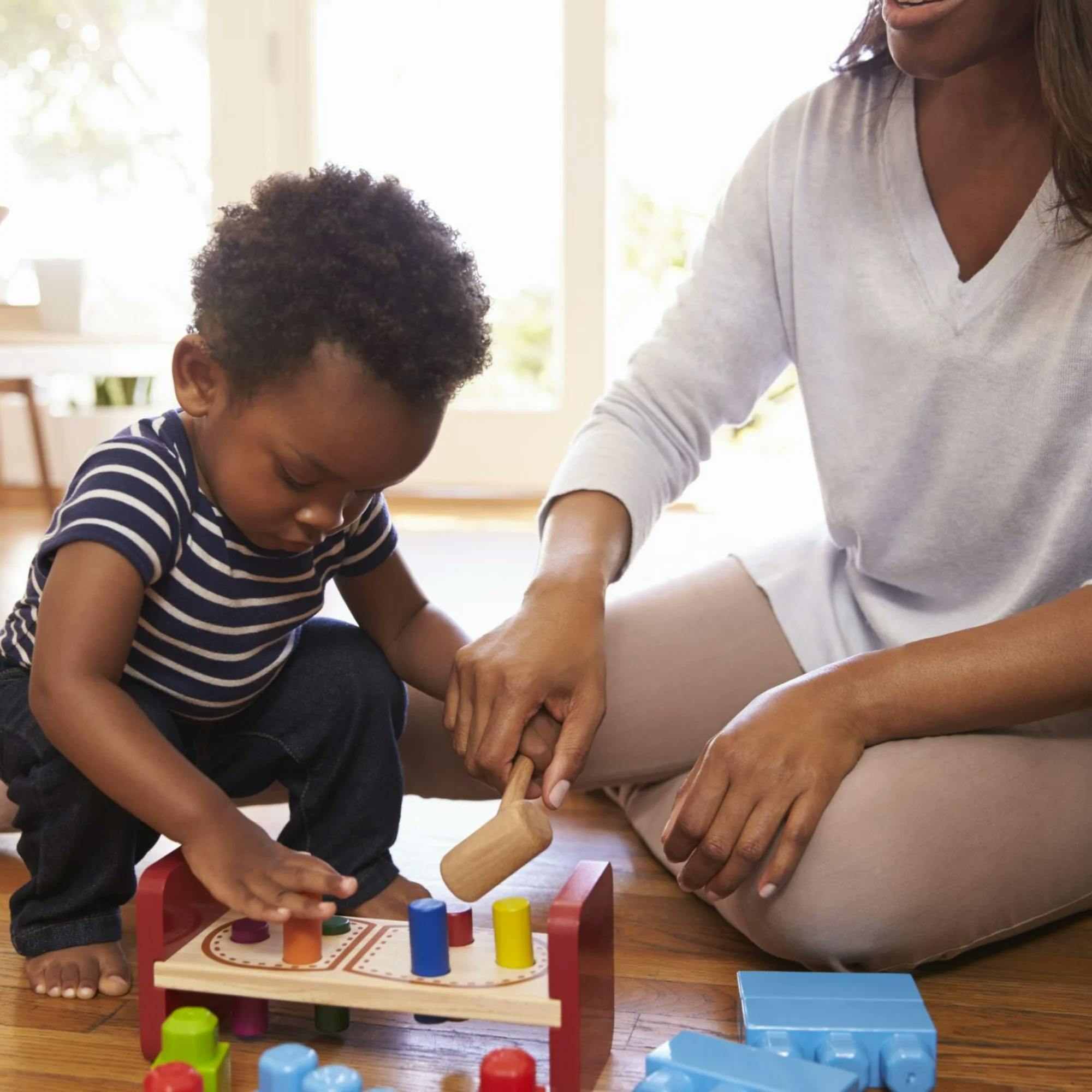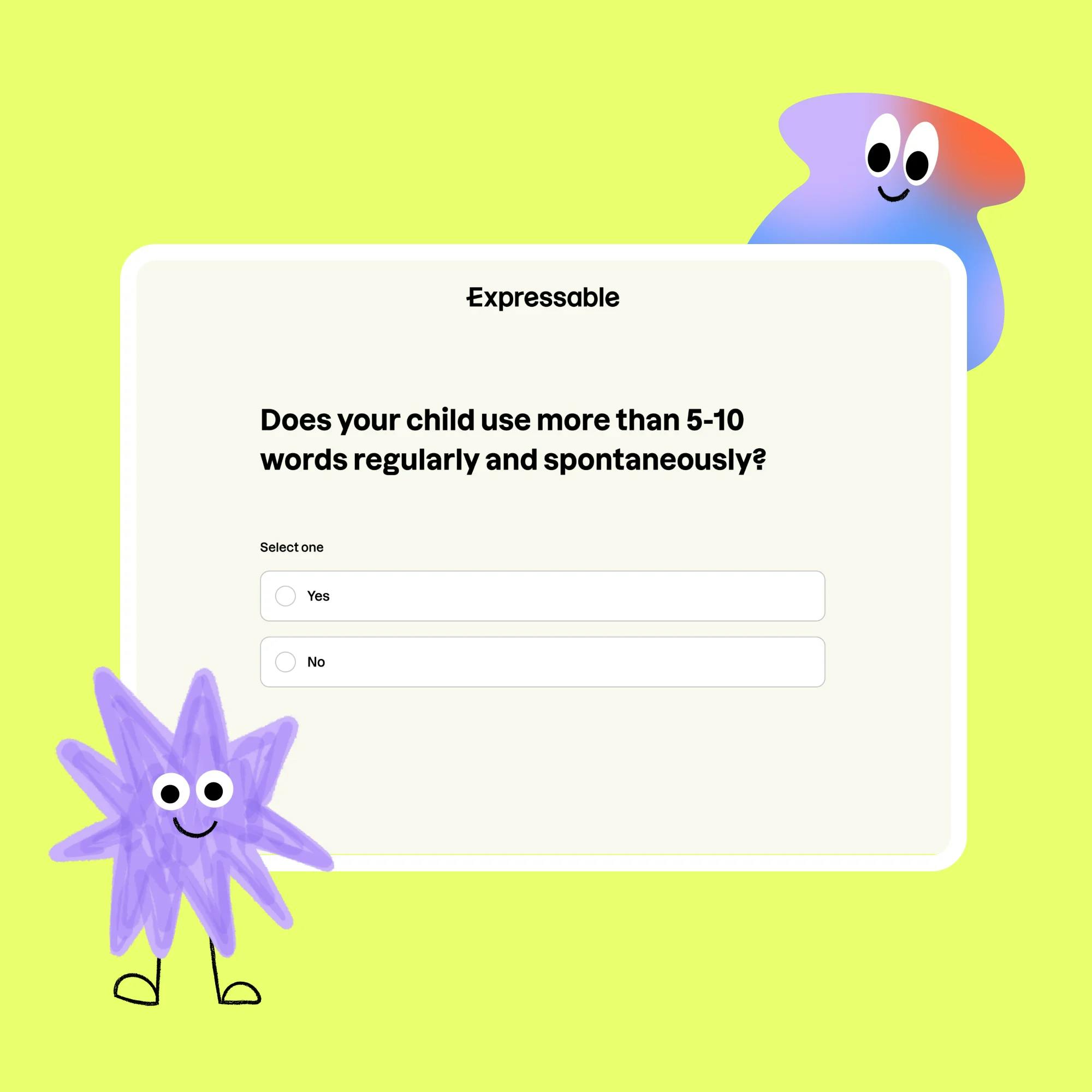If you have a child in speech therapy, or you’re looking at how to help your child at home with their speech, you’ve probably come across some unfamiliar terms. The word “cueing” might be one.
“Cueing” refers to how a speech therapist helps, or “cues,” a person along the way to reaching their speech therapy goals. Over time, the therapist offers fewer and fewer cues so the person can become more independent with their new skills.
You can think of cueing like training wheels on a bike. They’re there to help support the child as they learn to ride. Over time, the child becomes less reliant on their training wheels, and eventually they don’t need them at all.
The article explains the different types of cueing and how cues are used in speech therapy. Keep in mind that practicing at home, between therapy sessions, is how kids make the most progress. So it’s helpful for families to understand what’s happening in sessions and which cues help their child most.
What is cueing in speech therapy?
As mentioned above, cueing essentially means helping. It’s like providing a hint to prompt someone to do something.
There are four types of speech therapy cueing: verbal, visual, tactile, and multimodal. These cues can be used in a variety of ways with many different speech and language diagnoses. Let’s take a look at each type of cueing.
1 Verbal cueing
Verbal cueing is when the speech therapist, or the parent or caregiver, tells the child what to do or gives them a verbal hint. It’s a cue that the child can hear.
Here’s an example. Say a child is working on making the /s/ sound. If their tongue sticks out and they produce the ”TH” sound instead, the speech therapist may say, “Let’s try it again. Don’t let your tongue peek out!”
Here’s another example of a verbal cue. Say a child is working on using words to express themselves. But they continue to gesture and grow frustrated when trying to communicate what they want. If the speech therapist knows the child is able to use words, they might say, “Say it with me, ‘I want…’” and see if the child can repeat the phrase or fill in the blank.


2 Visual cueing
Visual cueing refers to a cue that the child can see. This might mean showing the child a picture, or showing them what to do with their mouth or hands.
Let’s say a toddler is learning to make signs to communicate. They’re trying to name their cup. The speech therapist may begin making the movement to sign for “cup” while making sure the child is watching. A quick glance at the speech therapist’s hands may remind the toddler how to sign it themselves.
Visual cueing can be used for just about any speech and language challenge. Let’s look at another example, with a child who’s in therapy for stuttering. Perhaps their speech therapist is focusing on the easy speech technique, in which words are said gently and good breathing is used. Your speech therapist may come up with a visual signal to remind the child of this technique as they talk. Maybe it’s a gentle hand motion, or a picture of a bird or a feather. These cues can remind the child to be “soft” with their speech, almost like “gliding” through their words.


3 Tactile cueing
Tactile cueing refers to using touch or a physical object to help someone know what to do. This is most commonly used during articulation therapy, in which a child is learning to make speech sounds correctly.
When a child is practicing speech sounds, they may need a physical reminder of how to make a sound. Let’s say they’re trying to say the /b/ sound. The speech therapist or caregiver may gently tap the child’s lips to remind them that their lips have to close for that sound.
If a child is working on the /l/ sound, they may need a physical reminder to bring their tongue up. So the speech therapist may touch right behind the child’s top teeth, to help them identify where their tongue needs to move.


4 Multimodal cueing
Multimodal cueing refers to using a combination of verbal, visual, and tactile cues. Every person benefits from different types and combinations of cues. And during their time in speech therapy, their needs may change as well.
Here’s a great example of multimodal cueing. Let’s say a child comes to speech therapy for receptive and expressive language development, and they’re working on understanding and answering questions. You may start by using visual and verbal cueing to help them. If you ask a question like, “What do you need when it rains?,” you may show a picture of someone getting rained on, without an umbrella. If the child still needs help answering, then you can present a picture of a person using an umbrella. You can also give verbal hints, such as, “Oh no, they’re all wet! What do they need?”
Over time, the child may not need the visual cues anymore. They may only need some verbal cueing. So you can continue to decrease the amount of help and cueing you provide until they can answer as independently as possible.


How do I know which type of cueing my child needs?
If you’re helping your child with their speech and language at home, you may not be sure how to go about it. You can start by using different types of cues with a trial-and-error approach. Chances are, you’ll find something that works.
If your child is already in speech therapy, your speech therapist can tell you exactly what’s working during sessions and how to practice at home for the best results. For example, if the speech therapist knows your child always needs a choice of two responses in order to answer questions, then you can do this at home. Instead of saying, “What do you want to drink?,” you could say, “Do you want milk or water?”
It may take some time to figure out what amount of help is right for your child. Just take your time and be responsive to whatever your child does best with. If they need a lot of cueing in the beginning, that’s OK!
Don’t hesitate to reach out to a speech therapist if you have concerns about your child’s speech or language. Or take our free online screener, which has questions tailored to your child’s age. Speech therapists are experts at using cueing to help children grow their communication skills, and a therapist will be ready to guide you each step of the way.
How Expressable Can Help
Concerned your child isn't reaching age-expected milestones? Looking for communication support from a professional? Expressable is a national online speech therapy practice serving children and adults. We treat all major areas of communication and feeding, offer flexible hours including evenings and weekends, and accept most major health insurance plans. We’re proud to have earned more than 3,000 5-star reviews from our clients (4.9/5 average).
Our therapy model is centered on parent and caregiver involvement. Research proves that empowering caregivers to participate in their loved one’s therapy leads to better outcomes. That’s why we combine live, 1-on-1 speech therapy with personalized education and home practice activities for faster progress.
Communication is more than words. It’s how we share how we feel and show who we are. We’re here to help you or your child do just that.

 Abby Barnes, M.S., CCC-SLP
Abby Barnes, M.S., CCC-SLP












